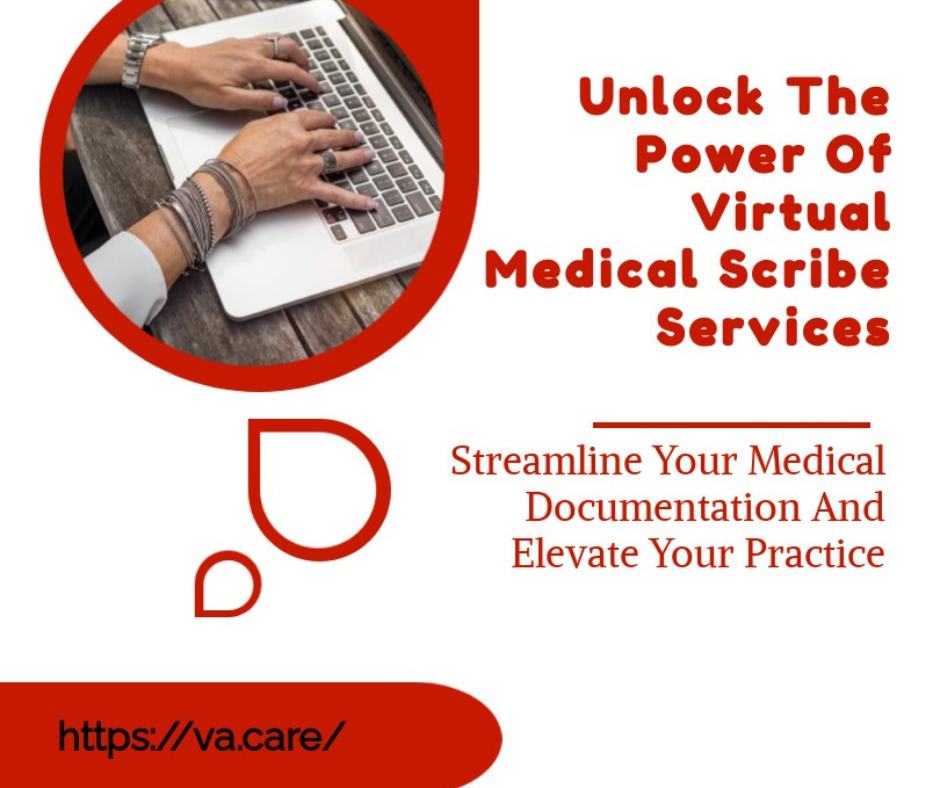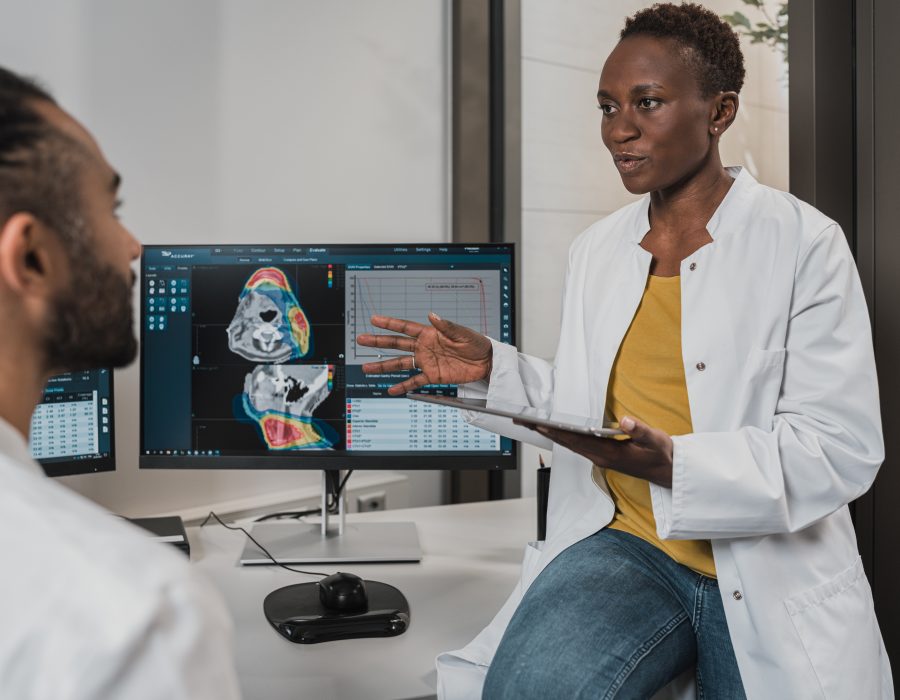In healthcare, the use of electronic health records (EHRs) has become common. Although EHRs have many benefits, they can add to a physician’s workload by requiring them to spend time typing during a patient’s visit. This can lead to increased stress and burnout for doctors.

To alleviate this burden, medical scribes have become an important part of healthcare teams. A scribe is a person responsible for accurately documenting doctor-patient encounters in EHRs. They provide support to doctors, allowing them to focus on patient-centered care, resulting in increased patient satisfaction and decreased burnout for providers.
Virtual medical scribe also known as telescribes, virtual scribes, or remote medical scribes, provide a more flexible and accessible alternative to live scribing. They offer the same benefits as hospital scribes while working remotely. This piece will delve into the various types of virtual scribes, explore the advantages and difficulties of employing them, and examine several companies that offer remote medical scribing services.
Understanding the Role of Virtual Medical Scribes in Healthcare
In healthcare, the use of electronic health records (EHRs) has become common. Although EHRs have many benefits, they can add to a physician’s workload by requiring them to spend time typing during a patient’s visit. This can lead to increased stress and burnout for doctors.
To alleviate this burden, medical scribes have become an important part of healthcare teams. A scribe is a person responsible for accurately documenting doctor-patient encounters in EHRs. They provide support to doctors, allowing them to focus on patient-centered care, resulting in increased patient satisfaction and decreased burnout for providers.
Virtual medical scribe, also known as telescribes, virtual scribes, or remote medical scribes, provide a more flexible and accessible alternative to live scribing. They offer the same benefits as hospital scribes while working remotely. The goal of this article is to delve into the various types of virtual scribes, highlight the pros and cons of employing them, and present several firms that offer remote medical scribing services.
Types of Virtual Medical Scribe
There are three types of virtual medical scribe that are used in healthcare.
- Video Virtual Clinical Scribes – This type of scribe is connected to the physician through a secure app on a tablet or laptop. They can communicate audibly and see the physician through a video link, which allows them to respond to non-verbal cues and document the encounter in real-time. One example is TeleScribe Video from ScribeAmerica.
- Audio Only Virtual Healthcare Scribes – The physician calls the scribe over a secure line before seeing the patient. The physician is equipped with a wireless earpiece that allows the scribe to hear and document the encounter. Some patients and providers prefer this option as it is less intrusive during the visit. Examples of this type of scribe include TeleScribe Audio from ScribeAmerica and ScribeLink from Aquity.
- Recorded Encounters Remote Medical Scribes – This type of scribe does not document in real-time. The physician records their patient encounters and then submits the audio files for scribing. The scribe listens to the recording and enters the required information into the EHR. The provider then logs in to review and sign the completed documents. This type of scribe is not connected to the physician in real-time, so they cannot ask for missing information to optimize the documentation.
Advantages of Working as a Remote Medical Scribe
Working as a remote medical scribe has several advantages. This type of job is ideal for people who need to work from home and offers flexible scheduling options. Additionally, working from home saves money on commuting expenses such as gas and car maintenance.
The goal of this article is to know the different kinds of virtual scribes, highlight the advantages and disadvantages of utilizing them, and present a number of companies that offer remote medical scribing services. This gives the scribe the chance to work with different practices and specialties and gain exposure to the systems and processes of multiple hospitals. This type of work also provides an income while gaining valuable clinical experience that can be used for medical school.
Working as a remote medical scribe can also help people understand the medical field more thoroughly. Furthermore, it offers opportunities to receive letters of recommendation, which can be a valuable asset in advancing a career.
It’s worth noting that while working remotely offers many benefits, some companies may require remote scribes to work from an office.
Ensuring a Secure and Reliable Connection for Virtual Scribing
In order for virtual scribing to work well and be secure, it is important to have a connection that follows the rules set by HIPAA. Companies that offer virtual scribing services take care of making sure this connection is in place. But, if you’re a healthcare provider using virtual scribes, it’s smart to talk with the company that provides your electronic health record (EHR), the company that provides your internet connection, and your IT department to make sure you are following HIPAA rules.
The internet is important for virtual scribing, so it’s essential to have a steady and reliable connection. Without the internet, virtual scribing won’t be able to happen, causing trouble with keeping medical records up to date. This can be a problem in hospitals, offices, and even at home. If there is an internet outage, you can write down notes and add them to the EHR later, but in emergency situations, the provider may need to document the encounter themselves.
Sometimes, Virtual Medical Scribe can’t hear everything that is being said during a medical visit. Since they aren’t in the room with the patient and provider, they depend on the provider to make sure the patient is close to the device and speaking clearly. To solve this problem, the provider can simply ask the patient to talk louder or repeat what they said.

